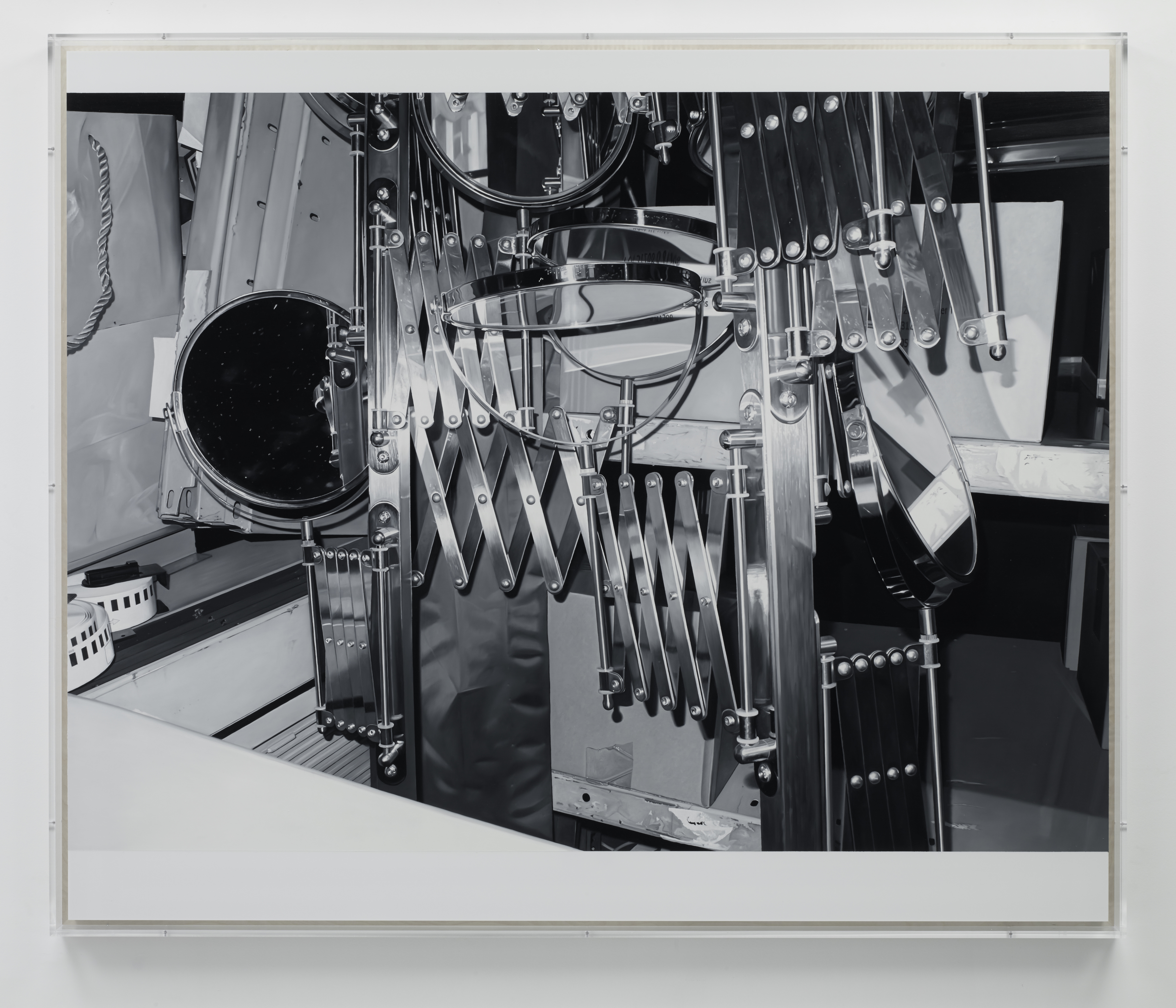
The artist is about to open ASPECT:RATIO at New York’s Sean Kelly Gallery, displaying a selection of monochrome paintings that were developed from his own snapshots. For the first time his paintings will follow TV and computer aspect ratios, blurring the line further between life, art and screen.
Can you tell us a little about the work that will be showing in ASPECT:RATIO?
There’ll be around 20 paintings in the show that have been made over a period of about a year and a half. I’ve made a series of small paintings of bottled mineral water (Still series) and will show some larger paintings in the now standard widescreen format. The subject of the work is the before and after, the past and future rather than the present–the painting as a paused image or spike on a timeline. Although hyper-literal in their appearance, the paintings aim at the more abstract idea of an external narrative so the familiar objects in the paintings become important and evidential.
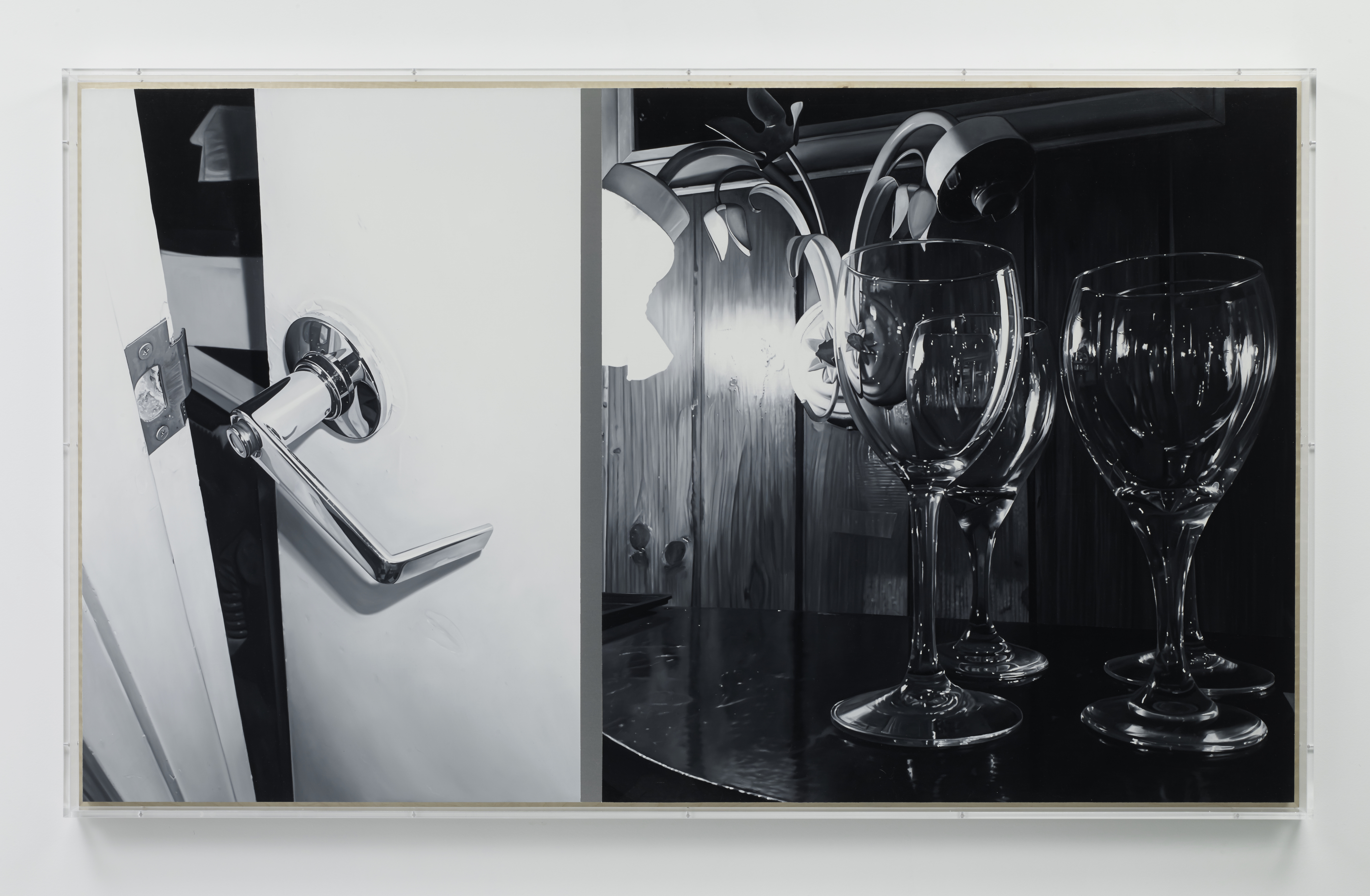
You have worked with a screen ratio for many of these works–reminiscent of viewing through a TV or computer screen. Do you feel the prominence of screens in modern life is drastically changing our relationship with the image?
Very much so. I think people’s ability to capture, consume and disseminate imagery on the move at a ferocious rate has really changed that relationship. Attention spans have become shorter and shorter and content on the web–the way most of us get our news/information–is geared toward that. The web is littered with 10 second amateur videos and gifs now seem to be the new emojis. It’s excellent and awful depending on your frame of mind!
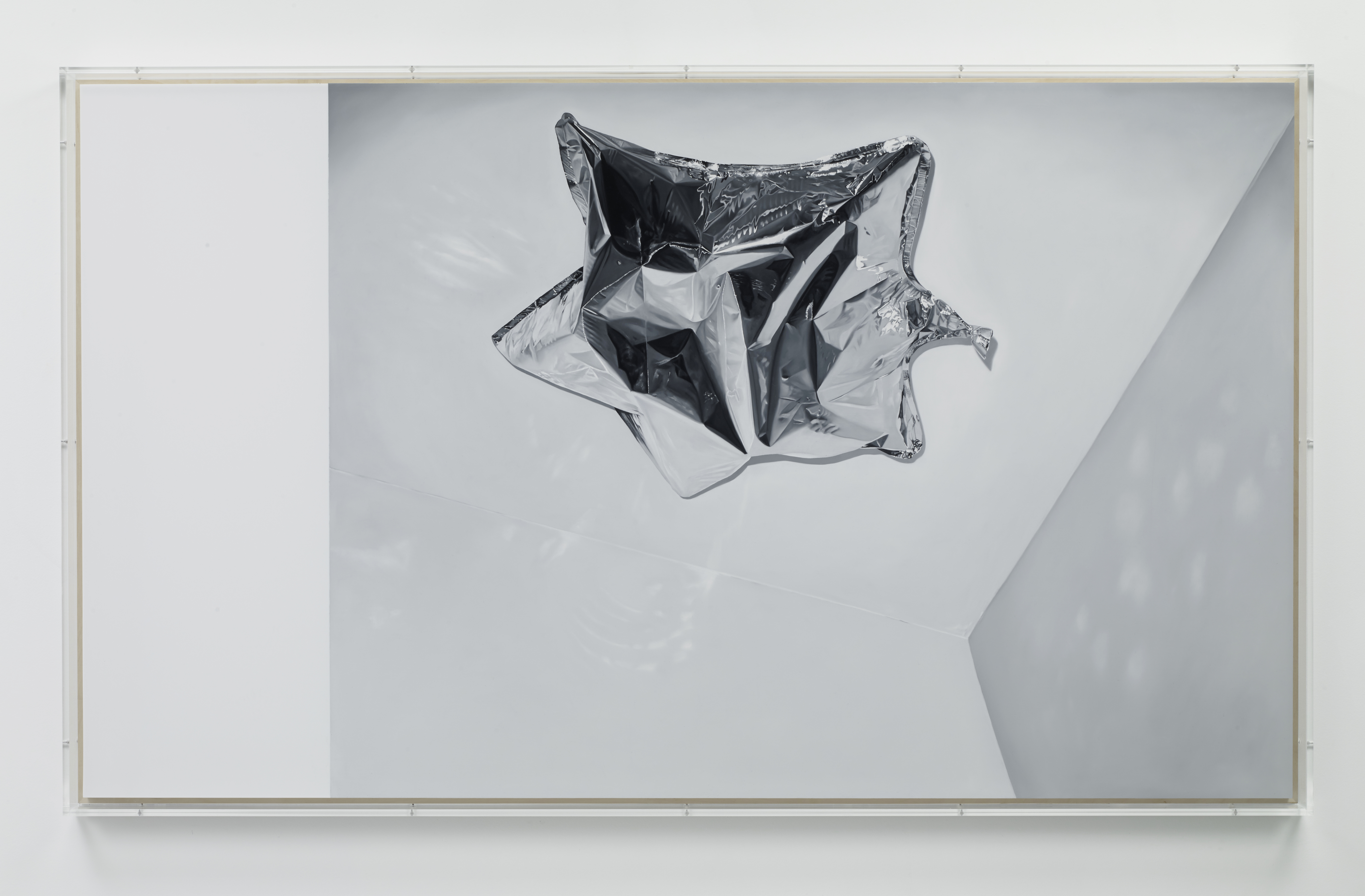
For this exhibition you have also brought in various surface interruptions, sometimes leaving areas blank, and at other times showing multiple scenes in one work. What prompted this exploration?
I always liked the idea of people filling in the gaps between one painting and another–trying to find connections or subconsciously forming relationships–joining up the dots. I thought it would be interesting to have that happen within a single work. The unpainted area of aluminium or perspex becomes the edit point but also exposes the semi-reflective fabric of the work which helps lend the paintings a certain objecthood.
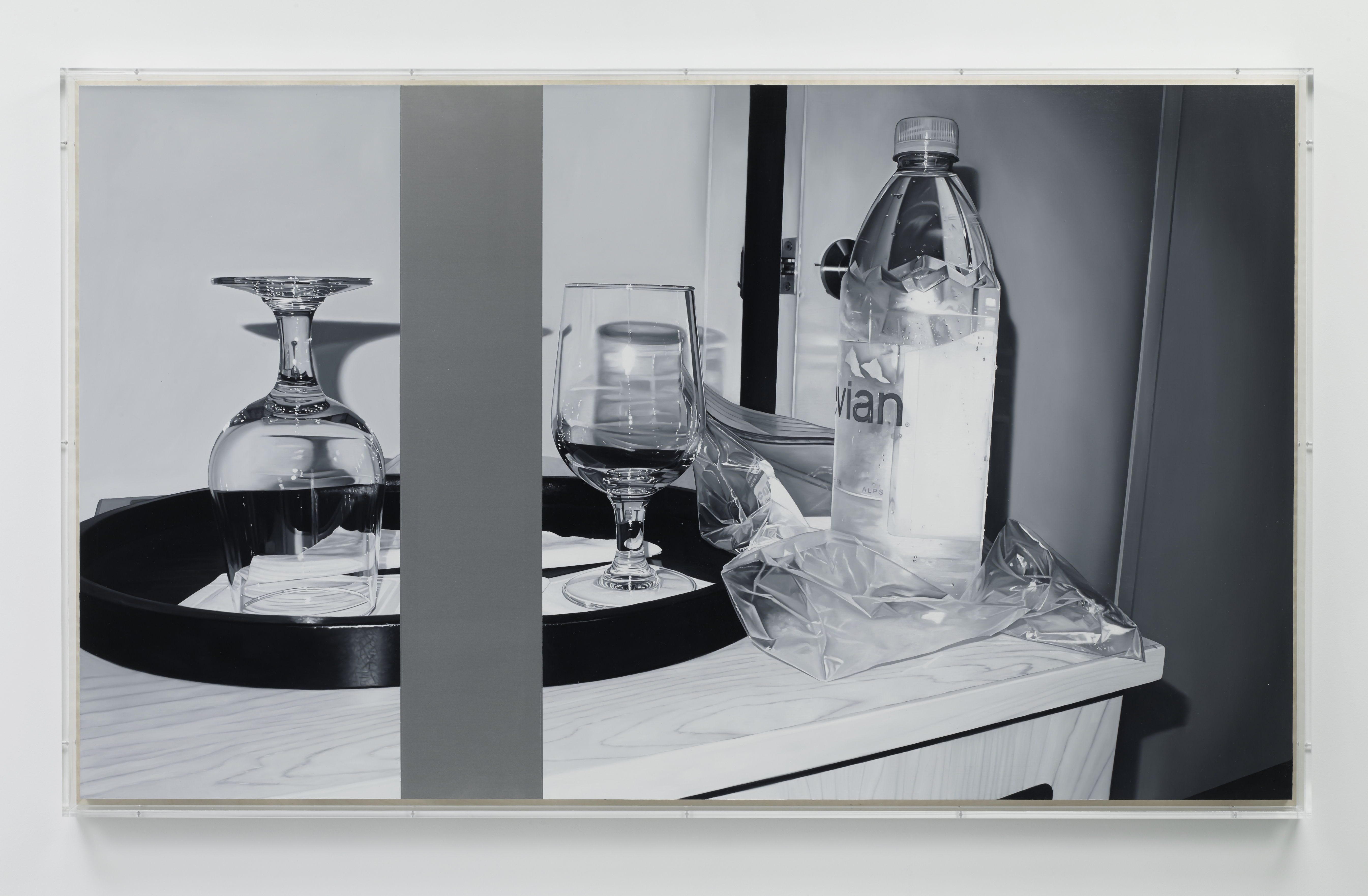
You paint, but in a photographic style. Did your initial interest in images come from paintings, photographs, stills–or something else entirely?
I love great painting but that is definitely not the starting point for me. I’m interested in how an image can make you feel and I want the work to have a strong psychological element. I want the stuff in the paintings to feel taught and suggestive. The function of the act of painting in my case is not to be expressive stylistically, quite the opposite. The paintings end up looking photographic not because I’m in any sense interested in photorealism but because I want to make a representative painting that’s as styleless as possible and the lack of colour also contributes to that. The act of painting functions as a means of introducing a layer of time to a given moment, it focuses the gaze and lends the objects and scenes an intensity that would be missing if the image was to remain as a photographic snapshot.
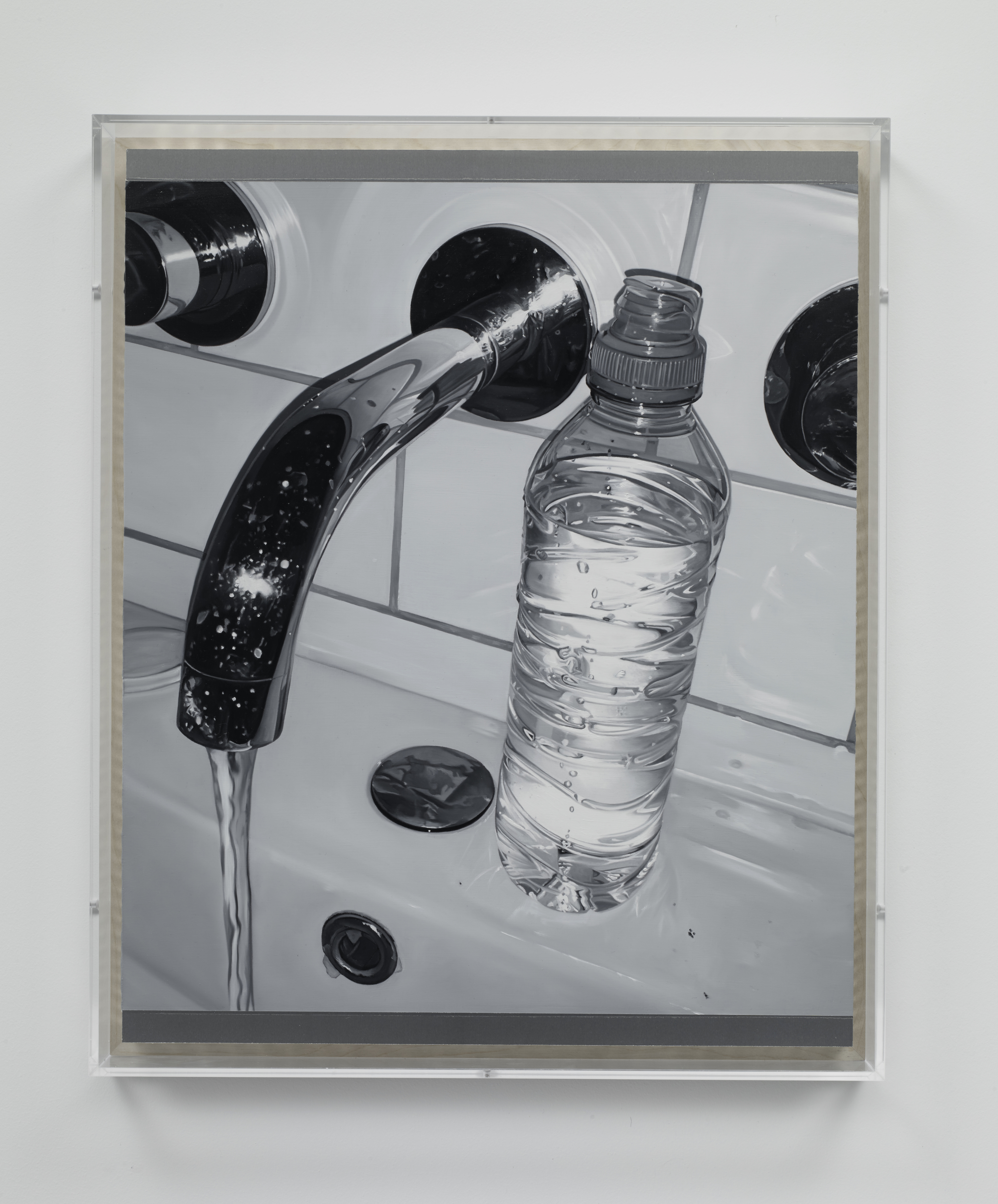
Your works spring from photographs of your own life, what is the next step from there? Do you have a similar process for each painting?
I really couldn’t say what my next step will be, this body of work is still very fresh in my mind and yes, I do have a monotonously similar process for each painting!
James White, ASPECT: RATIO will be showing at Sean Kelly Gallery, New York from 12 February until 12 March





